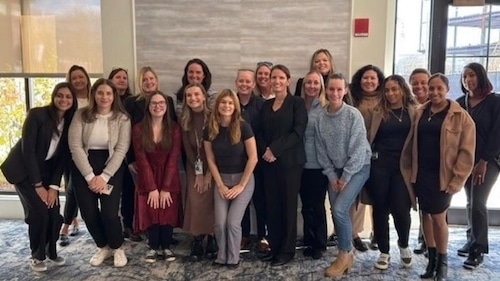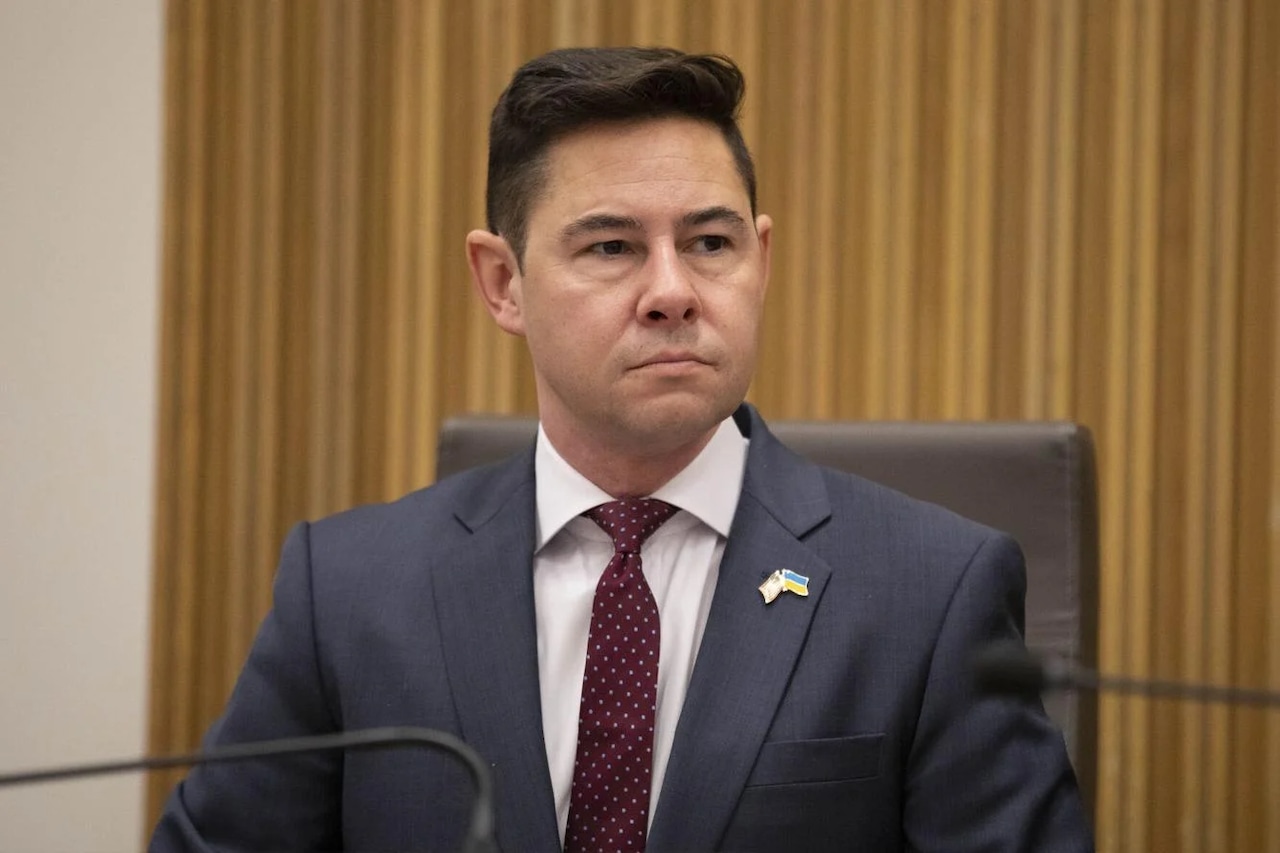The highest-ranked woman in the Massachusetts State Police force did not feel welcomed when she joined the academy more than 20 years ago, considering she wasn’t very tall and she had only studied journalism.
“When you enter the academy as a woman, 5-feet tall — with no prior police experience and no prior military experience — there’s a sense of, ‘What are you doing here?’” Massachusetts State Police Major Kathryn Downey said.
Downey was one of two women who graduated in 2005 from a 137-person recruit training class. She described it as a “very solitary experience, feeling like you really didn’t have a support system when you were there.”
After the academy, Downey faced unique challenges as a woman that her male colleagues did not.
But in recent years, police departments across Massachusetts pledged to make a change.
Ten departments have signed onto the 30×30 Initiative, a plan to increase the number of women in each agency to 30% by the year 2030 while they work to cultivate a culture of inclusion and equality by addressing individual department barriers.
To date, the following police agencies have signed onto the initiative: Arlington, Babson College, Boston Housing Authority, Boston, Boston University, Brookline, Lexington, Massachusetts State Police, New Bedford and Northampton.
Some agencies signed on as recently as last fall. Arlington, Northampton and state police were the first to sign on to the 30×30 Initiative in April 2021 — the recruitment efforts of which Downey described as “very, very ambitious.”
Making police more welcoming for women
When Brookline Police Chief Jennifer Paster took over as the department’s leader in May 2023, she identified the 30×30 Initiative as a top priority.
Paster said the pledge “aligns with my vision of ensuring our department reflects the community” of Brookline, “while leveraging the diverse perspectives women bring to policing.”
In her tenure, Paster has appointed 27 officers, of whom 33% — or nine officers — are women. Currently, 18% of the department’s sworn officers are women, and 18% of police supervisors are women, she said.
However, the improvements didn’t happen overnight.
“Achieving these goals has required addressing structural and cultural barriers,” Paster said.
An immediate focus was the renovation of inadequate locker rooms to support the growing number of women officers and to include accommodations for nursing. The town-funded project is expected to be completed early this year and is “an important step in making our workplace more inclusive,” Paster said.
The Brookline Police Department has a strong partnership with the Massachusetts Association of Women in Law Enforcement (MAWLE). With funding from the town, the department sent several officers and employees to the annual MAWLE training held in 2024.

Sworn members of the Brookline Police Department along with the agency’s crime analyst, dispatch supervisor and Northeastern University co-op students at the annual MAWLE conference in Norwood in 2024. Photo courtesy Brookline Police DepartmentBrookline Police Department
To Downey, one of the most important parts of the 30×30 Initiative is each police department is creating an environment that allows women to thrive — which will actually allow departments to reach their recruitment goals.
“We need to focus on not pulling in from the outside, but looking at the inside … so that a woman on our job will reach out to somebody that she knows and say, ‘Hey, it’s great here. You should join,’” Downey said.
Downey said she still sees a lot of work needed to that end.
In 2018, Downey sued the state police and another trooper with claims of sexual discrimination, whistleblower violations and retaliation. A judge dismissed the lawsuit in October 2021, but last summer, the Massachusetts Appeals Court ruled the discrimination part of the lawsuit could proceed.
30×30 Pledge
In 2018, the “chronic under-representation of women in U.S. policing” was discussed at a national research summit that included 100 women who represented law enforcement leadership, researchers and other professional organizations.
The report inspired the nationwide 30×30 Initiative, which requires pledged police departments to report on their recruitment efforts and identify problems that women officers face in their careers, according to the 30×30 website.
It’s a “flexible framework” that encourages agencies to share their “stumbling blocks” and acknowledge success through progress reports that allow departments to learn from one another.
Similarly to Brookline, women make up 18% of the current Lexington Police Department force of 50 officers, and the Northampton Police Department is at 17.5% with 10 sworn women officers.
When the Boston University Police Department joined the initiative in September 2024, it started with women representing 15% of its force, with a new strategic plan released at the end of last year prioritizing the initiative’s implementation.
But women only made up 10% of the most recent State Police recruit class in October 2024. In the past five years, that number fluctuated to a high of nearly 14% immediately after signing the initiative in 2021 and fell down to 9% with seven women in its 75-person graduate class of February 2024.
Downey said state police do not have “a strong enough action plan” when it comes to actually working on the pledge, nor any “measurable outcomes that show that we are doing enough” to further its goals.
But the actions of the newly-appointed Colonel Geoffrey Noble have given Downey hope for her agency to start progress on 30×30.
“Our new Colonel … seems to be engaging in very thoughtful conversations about issues that pertain to and that matter to women, and this [30×30 Initiative] is one of them,” Downey said.
Currently, a “women’s working group” made up of troopers and sergeants have been in “great conversations” with Noble on what women face on the job, Downey said.
The department is also in the beginning stages of a State Police Leadership Institute and within it, a women’s leadership working group to discuss the positives, negatives and improvements needed on the job.
Additionally, the process of how troopers are promoted — which is either through a promotional exam or appointed rank — is being internally reviewed to determine the best system of “putting leaders in the right places on this job,” who are diverse representatives of all groups, especially women, Downey said.
A seat at the table
Early in her career, Downey made sure she would have the same opportunities for promotions as her male peers by studying for promotional exams and putting herself “in a place where I could have a seat at the table to make change.”
Downey said that, in the past, male officers offered to take her calls without her asking. She’s also faced “inappropriate moments,” she said.
By addressing issues directly in the moment and head-on rather than brushing comments away, Downey said she’s seen positive outcomes.
“If somebody said, ‘Oh, you’re like one of the guys,’ I would correct them,” Downey said.
“I know they meant, ‘We like working with you, we get along with you,’ but I always took that as an opportunity to say, ‘I’m not one of the guys. I appreciate that, but I can do this job as a woman, and I don’t need to be one of the guys to do this job,’” she said.
The response was “always well-received,” she added, “and people would say, ‘Hmm, never thought about it that way.’”
By creating a more positive path for herself, Downey said, she helped pave a path for other women coming through the ranks. As the highest-ranking woman in the state police force, she’s making sure recruits don’t face the same “What are you doing here?” sentiment she faced early in her career.
“I had virtually no female role models as I was going through my first five or 10 years of the job, which are very formative years,” she said. Eventually, she did find a support network of other women officers.
“I was able to build some relationships, and having that support and people who could relate to what you were going through was huge,” she said.






